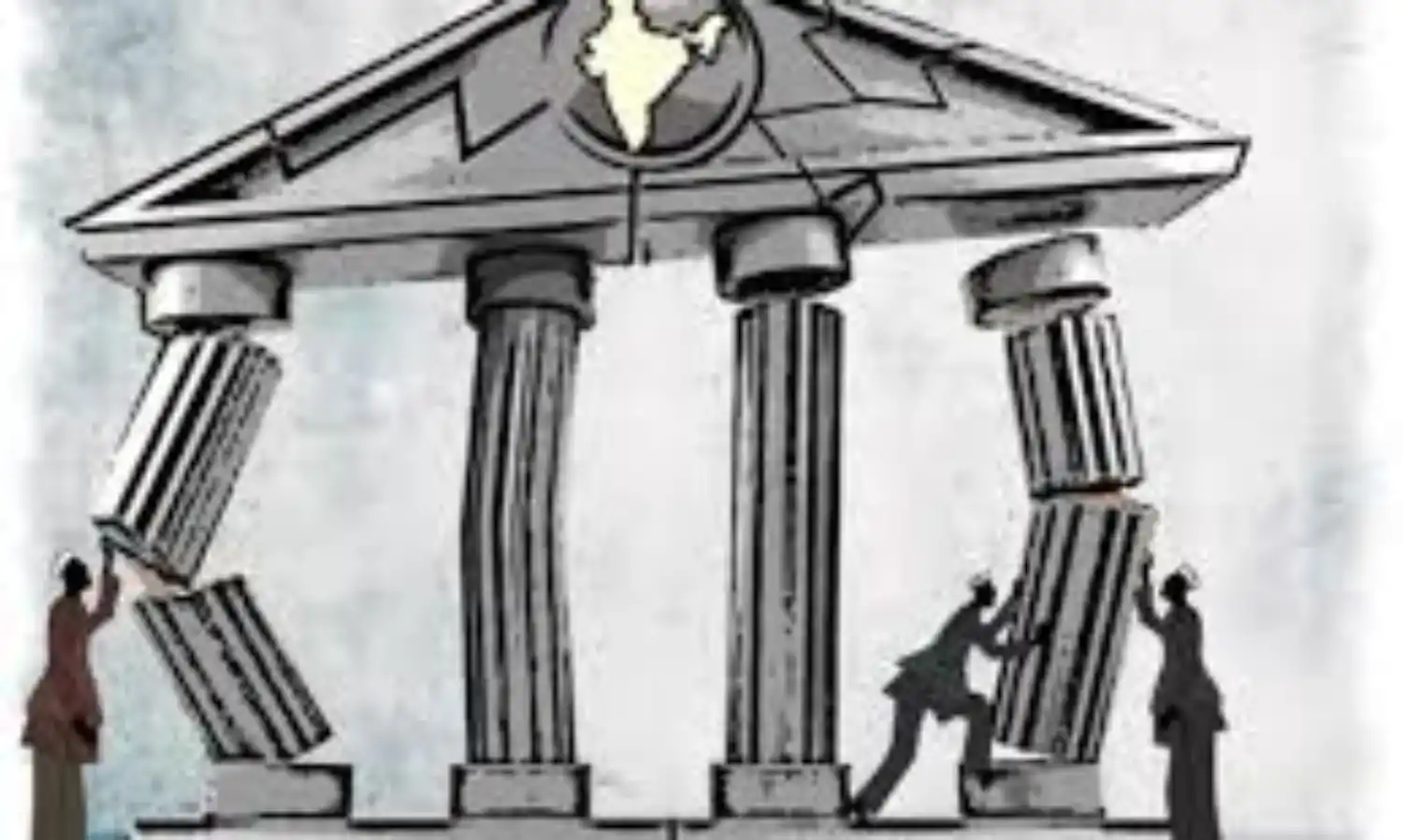A Fragile Balance
Of ethics secularism and judicial independence

On 12 September 2024, a photograph dominated the front pages of nearly every Indian newspaper. It depicted a scene at the residence of the Chief Justice of India (CJI), where the Prime Minister and the CJI stood side by side, performing a religious ceremony during Ganesh Chaturthi. The visuals, later shared on the PM's social media handles, sparked widespread debate, not just in political circles but also within the legal fraternity.
On the face of it, the photograph might seem harmless – after all, India is a country where public figures often participate in religious events. It is not uncommon for political leaders or other prominent public figures to be seen at religious ceremonies, especially during culturally significant festivals like Ganesh Chaturthi.
However, this situation is unique and fraught with ethical concerns. The criticism of the photograph is not aimed at the personal right of any individual to practice religion or to visit a colleague’s residence for such purposes. The matter has assumed importance because of the involvement of a key figure in the judiciary—a pillar of Indian democracy expected to remain insulated from political influences and perceptions of bias.
In democratic systems, more so in a country as complex and diverse as India, judges are held to a very high standard of ethical conduct, both inside and outside the courtroom. For ordinary citizens or politicians, such social interactions may be seen as routine. However, for judges – especially those of the higher judiciary – the bar is much higher. Their conduct is constantly under scrutiny, and the importance of not only being ethical but also appearing to be so is paramount.
This principle requires them to avoid situations that could lead to any perception of bias or undue influence. A sitting judge interacting with the executive, particularly the Prime Minister, creates an environment that can easily be misconstrued, regardless of the personal or social nature of the event.
The Constitution of India is built on the foundation of the separation of powers. It is an essential safeguard to prevent overreach by any one branch of government. The judiciary is the guardian of this principle. While India's legal system allows for some degree of interaction between the executive, legislature, and judiciary, there is a delicate balance that must be maintained. The judiciary must be seen as independent of the executive, especially when critical cases involving the government are pending in court.
The presence of the PM at the CJI's residence, while ostensibly a private social engagement, raises concerns about how such interactions might be perceived. The photograph in question blurs the lines between personal relationships and institutional boundaries. In the eyes of the public, the judiciary must remain neutral and free from any association that could cast doubt on its impartiality.
Shri Bhupender Yadav, Union Minister for Environment, Forest, and Climate Change, defended the PM’s visit to the CJI’s residence and the publication of the photograph by suggesting that it reflected "positivity and bonding," and symbolized secularism in its truest form. However, this interpretation is open to challenge.
The sight of the PM and the CJI together at a religious event can easily be misconstrued as an endorsement of a particular religious belief. This is not merely a theoretical concern—India has a long history of political and judicial actors being accused of bias based on their perceived affiliations or relationships. In this context, even the appearance of favouritism or undue influence can erode public trust in the judiciary.
Critics of the photograph are not questioning the personal right of individuals to practice their religion or their honesty and integrity. Rather, they are pointing to the need for those in positions of power—especially in the judiciary—to maintain an unassailable image of impartiality.
Public figures, especially judges, must be cautious about how their actions are perceived. As the saying goes, "Justice must not only be done but must also be seen to be done." This principle is central to the credibility of the judiciary. While the event may have been innocent, the potential for misinterpretation is high, and such situations are better avoided altogether.
The controversy surrounding the visuals of the Prime Minister and the Chief Justice of India performing a religious ceremony is a reminder of the delicate balance that public officials, particularly judges, must maintain. The judiciary, as the upholder of constitutional values, must remain above reproach, not only in its decisions but also in its public interactions. By scrupulously avoiding situations that could raise doubts about its independence, the judiciary can continue to command the trust and respect of the public.
Sandip Mitra retired from the Indian Foreign Service. Views expressed here are the writer’s own.



